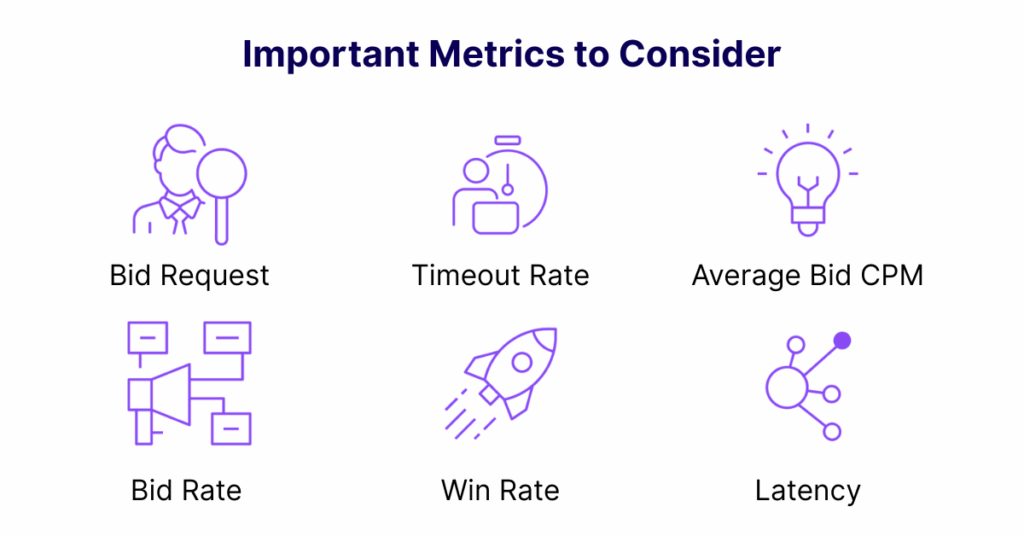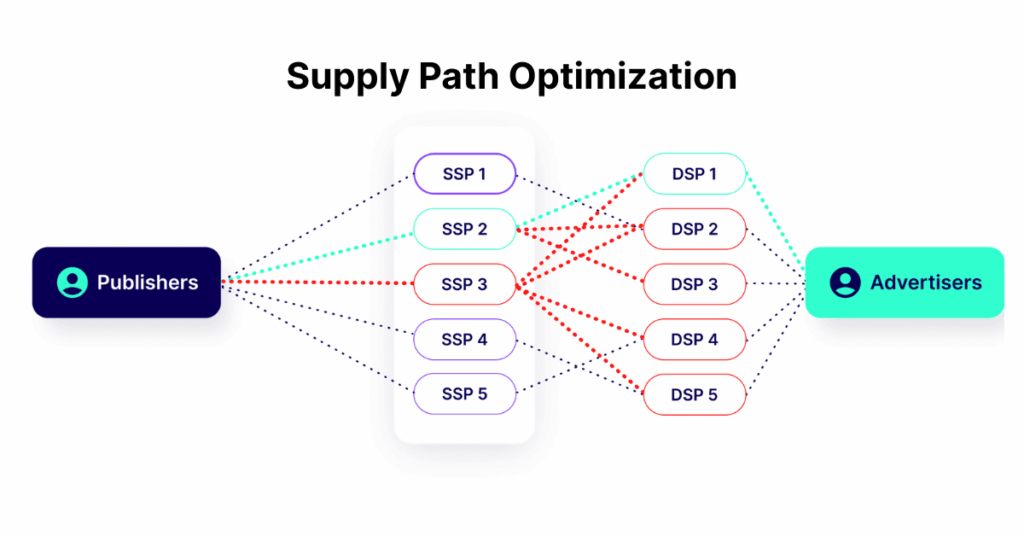Successful SSP management requires publishers to dig into important metrics as well as take advantage of supply path optimization, ultimately maximizing long-term revenue and operational efficiency.
Introduction
This article is part 2 of our series on SSP Management for publishers. While Part 1 focused on the evolving role of supply-side platforms and the importance of evaluating one’s header bidding stack, we will now dive into advanced demand analytics and the critical role of supply path optimization.
Understanding these principles is crucial for publishers seeking to improve yield management and ad revenue optimization.
Advanced Demand Analytics per SSP
Why Platform-Level Averages Can Be Misleading
Platform-level averages can hide critical performance patterns. An SSP that appears strong in general reports may only excel in a narrow segment.
In other areas, it may drag down auctions or increase latency. Publishers need signal-rich metrics to fully understand how each supply-side platform contributes to auction efficiency in header bidding setups and to ad revenue optimization.

Key metrics to monitor
The most basic metric for publishers to understand is the bid request. This measures the number of opportunities a supply-side platform is given to participate in auctions.
Secondly is the bid rate. This tells you how often an SSP actually returns a bid when it receives a request. A strong bid rate means the partner has active demand for that segment. A low or inconsistent rate could signal a lack of buyers or inventory mismatch.
A third metric to monitor is the timeout rate, which measures how often a supply-side platform fails to respond within the auction timeout window. Timeouts are generally higher on mobile devices and in regions with slower internet speeds, as network bandwidth directly impacts response times.
Header bidding wrappers typically set timeouts between 800 and 1200 milliseconds for mobile and 400 to 800 milliseconds for desktop. If an SSP consistently fails to send bid responses, it may indicate issues such as limited bandwidth, a broken ad unit, or other problems within the inventory.Win rate is another important metric, as it tells you how often the SSP actually wins when it participates in an auction.
Average bid CPM is a fifth metric to keep an eye on, which points out the typical price an SSP bids when it responds. Higher average CPMs can indicate stronger demand or higher-quality buyers, but only if paired with a healthy bid rate and win rate.
Latency is a sixth key metric to consider. It reflects the time an SSP takes to respond to a bid request. Even if a response arrives before the timeout, excessive latency can delay the auction and negatively affect user experience. SSPs with consistently slow response times may need to be deprioritized or excluded from certain traffic segments.
Publishers must understand that they must look beyond CPMs, and understand how all these metrics interact. Additionally, they must also keep quality in mind and consider factors such as user experience impact, brand safety incidents, transparency, and long-term revenue sustainability.
By combining these performance metrics with quality indicators, publishers can make informed decisions, partner with the right SSPs, and ensure each impression contributes meaningful revenue and long-term audience trust.
Supply Path Optimization and SSP Management
Each supply-side platform represents a path between your inventory and the advertiser. Some paths are essential, but others add unnecessary intermediaries, increasing latency, reducing revenue, and creating redundant bid traffic.
Supply path optimization (SPO) focuses on identifying and reducing the number of intermediaries in the programmatic advertising supply chain between the advertiser and the publisher.
Reducing intermediaries improves auction speed, enhances header bidding efficiency, and ensures that the remaining direct SSPs that a publisher works with are going to get a bigger market share. This means they will win auctions more frequently and get to display impressions more frequently (probably at a lower price because competition will be lower).
Thanks to this activity, the mathematical models for buying and selling inventories in DSPs and SSPs will show that these streamlined paths have a higher profitability per request. This metric — revenue per thousand requests (RPM) — is a key inventory quality KPI.
As that KPI increases, the volume of demand going through these remaining paths will increase and they will spend more on the publisher, offsetting the loss of revenue coming from resellers.

By choosing high-performing, trustworthy partners, publishers can reduce ad fraud, avoid low-quality inventory, and ensure their ads appear in the best environments.
More reliable partners also enable better pricing, improved efficiency, and a more strategic approach to programmatic advertising, benefiting both publishers and advertisers.
At Opti Digital, we believe that supply path optimization is positive for the entire ecosystem: publishers deliver qualitative inventory, brands achieve better campaign outcomes, and everyone wins. Including our planet!
Fewer redundant calls mean lower server use and a smaller carbon footprint. In fact Digiday reported a 20% reduction in emissions for one client after optimizing SSP pathways.l or regional traffic shifts, ensuring that the most effective SSPs are prioritized when competition is high.
Reducing intermediaries, improving efficiency, and leveraging traffic shaping ensures each partner delivers meaningful demand, making monetization smarter and faster, making yield management more accessible.
Publishers should start thinking of supply path optimization as the standard approach, and Opti Digital is here to help you make it work!
Key Takeaways
Effective management of your SSP stack is about identifying what works best for your inventory and cleaning up regularly.
Overloading your stack with too many SSPs can hurt performance with slow ad load times, and reduce revenue by creating redundant demand. Using supply-side platforms that focus on quantity over quality is just as bad, filling auctions with low-value bids that disrupt user experience and drag down overall performance.
To optimize your stack, follow these key actions:
- Prioritize SSPs with unique demand.
- Audit and clean up your SSP connections regularly.
- Focus on quality over quantity.
- Monitor KPIs.
- Consider factors such as user experience impact, brand safety incidents, transparency, and long-term revenue sustainability.
- Leverage supply path optimization.
By following this checklist, publishers can maintain excellent yield management, while also improving overall efficiency, and gaining transparency.
Success is not about the number of supply-side platform you are connected to or fancy claims on performance. Success comes from careful analysis and strategic, SPO-driven management.
FAQs
SPO streamlines the paths between inventory and advertisers by reducing unnecessary intermediaries. This lowers latency, eliminates redundant bids, improves auction efficiency, and helps maximize yield management and ad revenue optimization.
Publishers should track bid requests, bid rate, timeout rate, win rate, average CPM, and latency. These metrics, combined with quality indicators like brand safety and user experience, help optimize header bidding and overall ad revenue optimization.
Advanced analytics identify high-performing SSPs by segment, while SPO removes inefficiencies. Together, they streamline auctions, prioritize effective demand paths, and strengthen yield management and ad revenue optimization.






